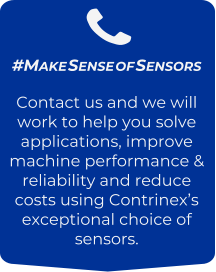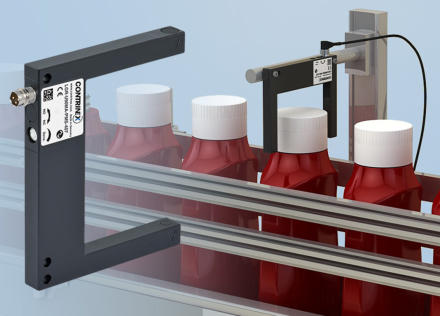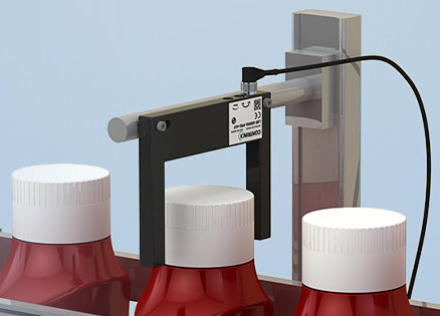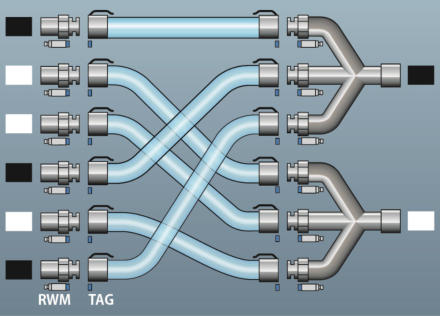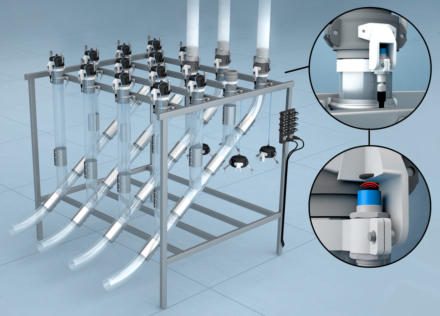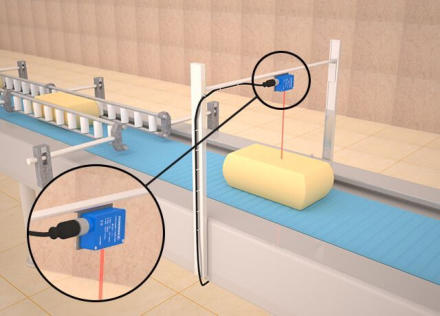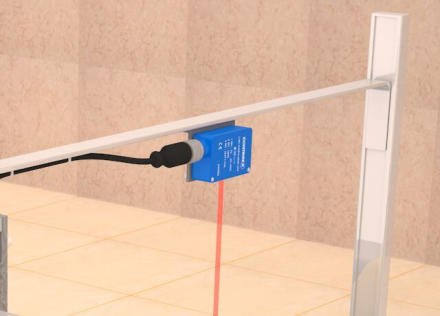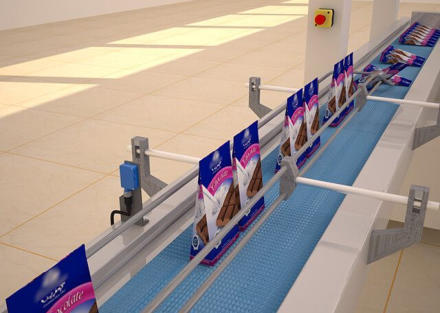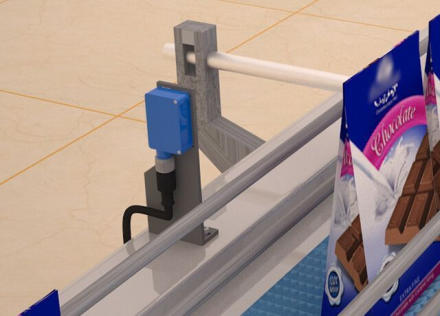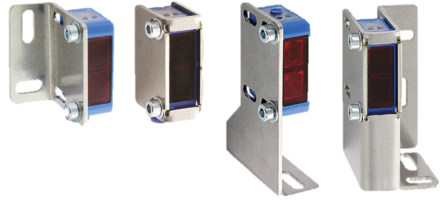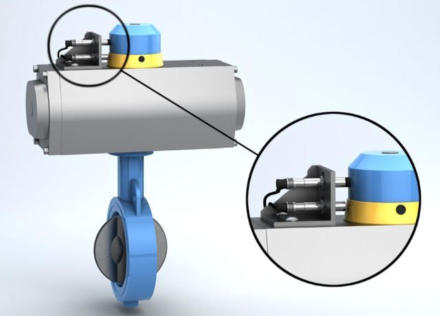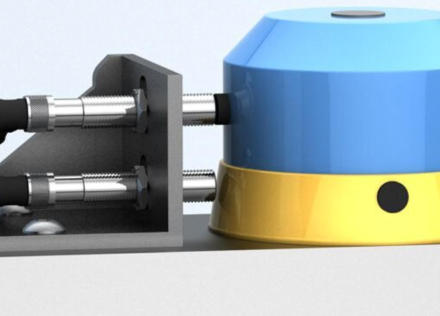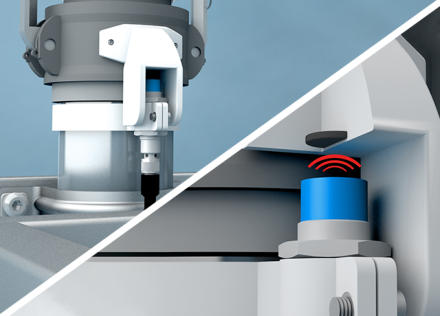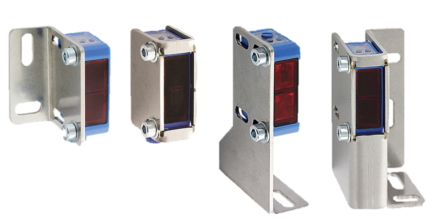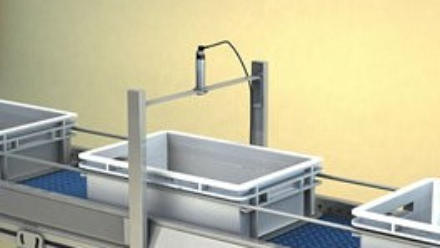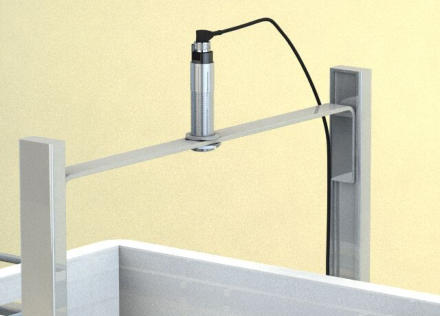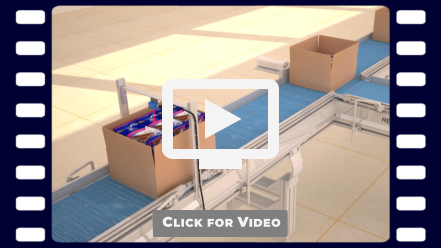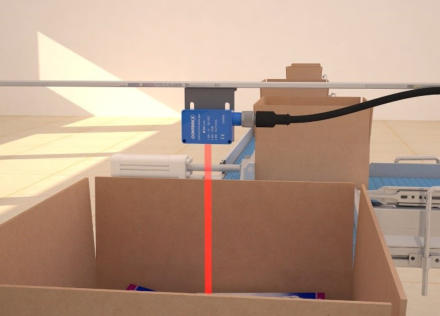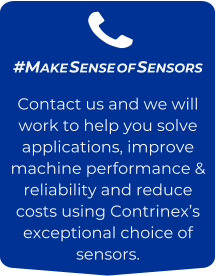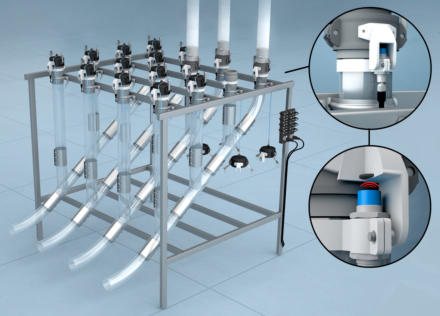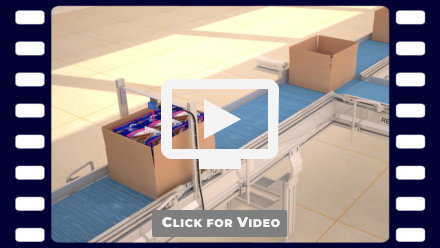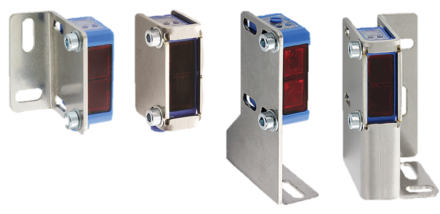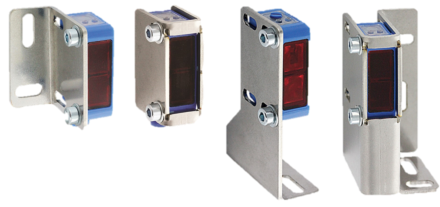(0121) 58 222 58 SALES@PLUSAUTOMATION.CO.UK

© 2021 - PLUS AUTOMATION LIMITED®

HELPING YOU #MAKE SENSE OF SENSORS








EXAMPLE APPLICATIONS
TO ILLUSTRATE THE WIDE-VARIETY OF APPLICATIONS SOLVED USING CONTRINEX SENSORS, WE HAVE POSTED A LARGE SELECTION OF EXAMPLE APPLICATIONS WHICH CAN BE SEEN BY CLICKING ON AN IMAGE. BELOW ARE A SELECTION OF SOME OF THESE APPLICATIONS:



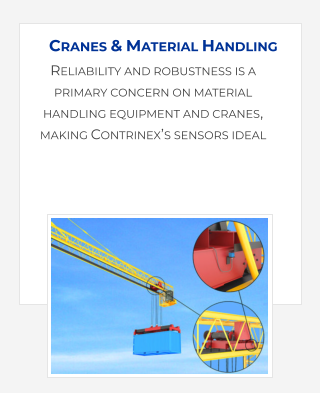
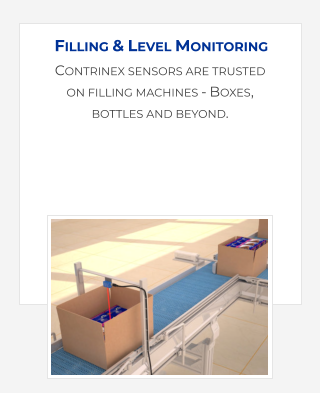
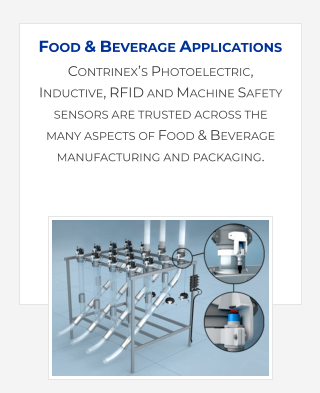
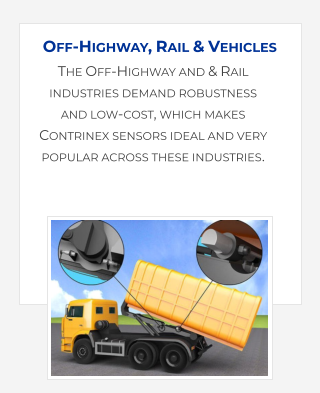
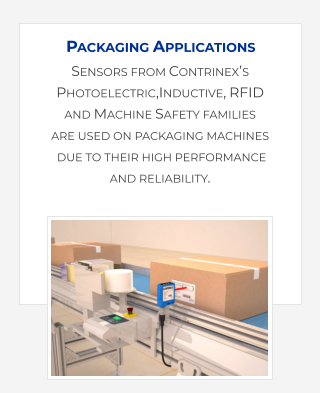
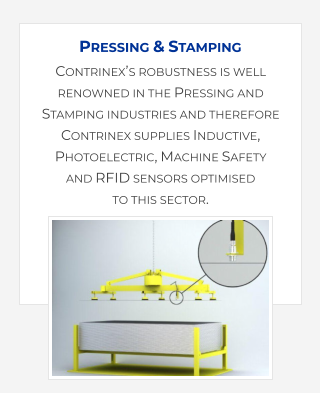
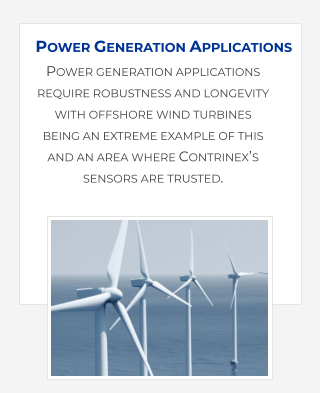
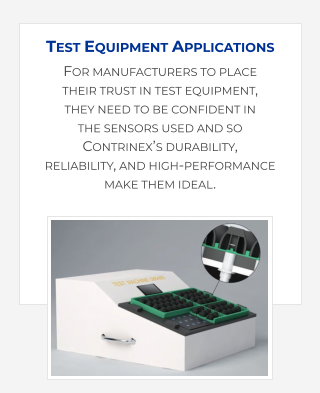
CUSTOMER SOLUTION
Contrinex fork light-barrier sensors combine simplicity of
installation, compact and robust construction and multi-mode
operation. They offer high-resolution, high-speed sensing plus
IO-Link connectivity, being ideal for position sensing and
presence detection.
The versatile, metal-cased devices offer designers the choice of
four discrete operating modes and switching frequencies up
to 14,000Hz. With a standard resolution of 0.3 mm (down to 0.1
mm in high-resolution mode), with the convenience of a push-
pull output.
The industry-standard IO-Link communication protocol,
provides a choice of manual or remote set-up and adjustment,
enabling the sensor to be automatically reconfigured between
different product production runs.
simplifying installation while saving time and money.
The product range offers a choice of fork openings from 10
mm to 120 mm, to suit a wide variety of applications and
environments, whilst saving time and money.
Food production utilises automation to achieve high-efficiency
and for example a processing plant trusts Contrinex Fork
photoelectric sensors to help it ensure plastic bottles, filled
with liquid food products, are hermetically sealed and capped
to keep its customers kept safe.
Prior to fitting plastic caps a long-distance inductive sensor
positioned directly over the packaging line confirms the
presence of an aluminium-foil seal over the top of every
container.
CUSTOMER APPLICATION
In the continuous production of fast-moving items, line
stoppages are both costly and time consuming. After filling,
sealing and capping, bottles of ketchups and sauces are
labelled and packaged. Previously, if a plastic cap was missing
it could go undetected, risking an entire batch of production
potentially being rejected.
Contrinex’s highly versatile photoelectric fork sensor, is
positioned directly over the conveyor to sense the presence of
a cap on each bottle prior to labelling, triggering an alarm if a
cap is missing.

PRODUCT ADVANTAGES
HIGH FREQUENCY UP TO 14 KHZ
4 SELECTABLE MODES BETWEEN PRODUCTION BATCHES:
STANDARD, HIGH RESOLUTION, POWER, SPEED
IO-LINK V1.1 COMMUNICATION PROTOCOL
SENSITIVITY ADJUSTMENT ALLOWING DETECTION OF
TRANSPARENT OBJECTS
PRECISE ALIGNMENT REQUIRES NO ON-SITE ADJUSTMENT

CUSTOMER VALUES
INDUSTRY-STANDARD IO-LINK INTERFACE ENSURES RELIABLE
OUT-OF-THE-BOX CONNECTIVITY
DUAL-MODE READ-WRITE MODULES DELIVER ULTIMATE
FLEXIBILITY
STANDARD I/O MODE OPERATION PROVIDES DECENTRALISED,
LOCAL INTELLIGENCE
IO-LINK MODE OPERATION PROVIDES CENTRALISED
INTELLIGENCE
PLANT-WIDE COMMONALITY OF RWM HARDWARE MINIMIZES
SPARES INVENTORY HOLDING
INTEGRAL M12 CONNECTORS ENSURE EASY INSTALLATION
AND REPLACEMENT
PRODUCT ADVANTAGES
IO-LINK V1.1 COMPATIBILITY
ROBUST METAL HOUSINGS WITH PBTB SENSING FACES
SENSING DISTANCES UP TO 60MM
RECONFIGURABLE REMOTELY OR VIA MASTER TAG
Bulk-handling and pneumatic transport system designers use
RFID technology to eliminate connection errors at manual
hose-coupling stations for fluidisable materials. Coupling
stations, with IO-Link enabled read/write modules (RWMs)
mounted on each outlet pipe, use manual quick-release hoses
to feed materials to multiple machines. RFID tags, mounted
integrally within each hose coupling and blanking cap, identify
the mating parts uniquely, allowing individual outlet/hose
combinations to be verified at the time of connection.
CUSTOMER APPLICATION
Bulk-handling systems across diverse industries, including
food processing, plastics and pharmaceuticals, rely heavily on
pneumatic conveying systems for transporting powders,
granulates and other fluidisable materials. Pneumatic
conveyors offer quick, reliable high-volume transportation with
minimum degradation of the transported material.
Coupling stations offer a simple and cost-effective means of
connecting several material sources, typically silos or storage
bins, to multiple processing machines. A pipe from each
source enters the bottom of the coupling station, where it
branches, providing multiple outlets for each material. Quick-
release hoses, connected manually to the corresponding
outlets, feed materials to machines. Unused outlets are
capped.
CONTRINEX’S PHOTOELECTRIC, INDUCTIVE, RFID AND MACHINE SAFETY SENSORS ARE
TRUSTED ACROSS THE MANY ASPECTS OF FOOD & BEVERAGE MANUFACTURING AND PACKAGING.
ADVANCED FEATURES INCLUDE PREVENTATIVE-MAINTENANCE OUTPUTS; IP69K
CIP-WASHDOWN RATINGS; UV TRANSPARENT-OBJECT DETECTION; MAKE THEM POPULAR.
THE WORLD’S LARGEST SELECTION OF IO-LINK SENSORS PROVIDE ADDITIONAL PERFORMANCE
DATA IN A CONSISTENT MANNER AND HELPS MAKE IOT / INDUSTRY 4 CONNECTIVITY EASIER.
FOOD & BEVERAGE APPLICATIONS


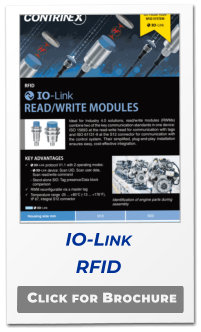
Customer Solution
Ecolab-certified, diffuse-mode photoelectric sensors with
background suppression from the Contrinex C23 product
family are ideally suited to this application. These miniature
cubic devices, mounted above product conveyors immediately
after each buffering station, detect the presence of cheese
portions as they pass underneath. Positioning sensors is
simple thanks to a range of adjustable stainless steel
mounting brackets.
An industry-standard PNP normally open output with an M8
connector ensures optimum flexibility. Additionally, IO-Link, a
standardized point-to-point serial connection protocol for
sensors and actuators, is enabled on PNP versions at no
additional cost, offering the advantages of digital
communication without the need for special cabling. A second
output provides a stability alarm in the event of reduced
sensitivity, flagging the need for preventative maintenance
before any performance degradation occurs.
Robust sensor construction, featuring miniature (20mm x
30mm x 10mm) plastic housings, ensures reliable operation in
the demanding washdown environment; Contrinex C23
devices are rated to IP67. An operating range between 15mm
and 250mm, adjustable via a teach button or via IO-Link,
accommodates the range of portion sizes without
compromise.
A brief one- or two-step teach procedure simplifies initial set-
up. One-button operation allows process engineers to teach
the target object and, optionally, the background, each time a
new portion size is introduced. Once taught, sensitivity
parameters are stored on the sensor’s inbuilt memory and
may be retrieved or updated remotely via IO-Link, eliminating
the need for manual adjustment.
These rugged miniature sensors meet the customer’s need for
reliable operation with little or no manual intervention, while
unplanned sanitization is avoided. The solution is highly cost-
effective with minimal non-productive time; throughput is
maintained at or above target levels.
Contrinex’s small, but powerful C23PA photoelectric sensors
are trusted to ensure conveyors deliver cheese portions to
packaging stations, with in-line buffering stations regulating
their flow to match packaging throughput. The miniature
Ecolab-certified sensors detect the presence of each portion
after buffering, triggering the packaging cycle. Sensitivity
parameters for each portion size, stored on the sensor’s inbuilt
memory, may be updated remotely using IO-Link, removing
the need for a manual intervention and eliminating the need
for unplanned sanitisation between batches.
CUSTOMER APPLICATION
A Swiss manufacturer of premium dairy products produces a
range of individually packaged cheese portions in a high-
volume hygienic production facility. Once cut to size, cheese
portions travel on a food-grade conveyor to a packaging
station; the duration of the packaging cycle is dependent on
the type of cheese and the portion size.
Prior to packaging, a buffering station produces a regular flow
of portions with a predetermined spacing to suit the
packaging throughput. The two operations must be
synchronized; the manufacturer requires a sensor system that
detects the presence of each cheese portion as it leaves the
buffering station, triggering the packaging cycle.
Sensors must be food-grade certified and withstand the
aggressive cleaning agents used during washdown routines.
They must also accommodate the full range of portion sizes
without the need for manual adjustment, as this would
necessitate sanitisation each time the portion size changes.
Maximising throughput is an additional priority; rapid
changeover between product batches is essential.
During high-speed production of retail bags, a confectionery
manufacturer conveys individual bags of sweets to a pick-and-
place packing robot for secondary packaging. A highly reliable
diffuse-mode photoelectric sensor, mounted beside the
conveyor, detects the presence of bags as they approach the
packing station and inhibits the pick-and-place sequence if no
bags are queued for the packing robots.
CUSTOMER APPLICATION
In the food-processing industry, consumer products generally
require secondary packaging – both for consolidation and for
protection, before final dispatch. During confectionery
production, individual bags of sweets travel by conveyor from
bagging stations to a pick-and-place packing robot for
secondary packaging, before passing on to the labelling and
packing area.
Ideally, product flow along the conveyor is continuous; in
practice, interruptions occur from time to time as bagging
machines require attention. In the absence of bagged
products arriving at the secondary-packaging station, a plant-
wide control system prevents operation of the pick-and-place
robot to prevent miss-filling.
Immediately prior to arrival at the secondary-packaging
station, custom-formed guide rails align bags for packing.
Space is limited and there is no easy access to both sides of the
conveyor. A highly reliable non-contact sensor system was
needed to detect the presence of bags as they approach the
alignment rails; the system must inhibit the pick-and-place
sequence if no bags are queued for packing
CUSTOMER SOLUTION
Diffuse-mode photoelectric sensors from the Contrinex C23PA
family of sensors are ideal for this application. These highly
reliable devices contain both a transmitter and a receiver and
do not require a separate reflector, instead relying on the
reflective nature of the target. Space constraints are
accommodated without compromise, thanks to a maximum
sensing range of 3 to 1500mm. This is adjustable via a pre-set
potentiometer or via IO-Link, the standardised point-to-point
serial connection protocol.
Immediately before the alignment rails, a single sensor is
mounted beside the conveyor; positioning sensors is simple
thanks to a range of adjustable mounting brackets. As each
bag passes in front of the sensor, its presence triggers the
device, sending a signal to the customer’s control system. A
high-intensity red LED with a 15mm-diameter light spot at the
selected 500mm sensing range ensures highly reliable
detection of bags in real-time.
Mounted in 20mm x 30mm x 10mm miniature plastic
housings, C23 photoelectric sensors are available with
industry-standard PNP or NPN 3-wire or 4-wire output.
Connection to the customer’s control system is via a PVC-
sheathed cable with the choice of an integral M12 connector or
a hermetically sealed entry. A second output provides a
stability alarm in the event of reduced sensitivity, flagging the
need for preventative maintenance before any performance
degradation occurs
The sensors are corrosion-resistant and impervious to water
ingress and has the additional benefit of offering a range of
low-cost stainless-steel mounting and protection bracketry.
The reliability of the sensors in the application has been
excellent.

CUSTOMER VALUES
RELIABLE, REPEATABLE IN-LINE QUALITY CHECKS ON A NON-
CONTACT BASIS
IMPROVED QUALITY ARISING FROM REAL-TIME DETECTION OF
INCORRECTLY PACKED CARTONS
INCREASED PRODUCTIVITY AS STABILITY ALARM FLAGS
PREVENTATIVE-MAINTENANCE NEEDS• SINGLE SENSOR
ACCOMMODATES A RANGE OF CARTON SIZES WITHOUT
REPOSITIONING
REMOTE ADJUSTMENT VIA IO-LINK REDUCES CHANGEOVER
TIME BETWEEN PRODUCTS
PRODUCT ADVANTAGES
MAXIMUM SENSING RANGE OF 300MM WITH PINPOINT RED
LED
BEST-IN-CLASS BACKGROUND-SUPPRESSION BLACK/WHITE
BEHAVIOUR
IO-LINK CONNECTIVITY AVAILABLE AT NO EXTRA COST ON
PNP VERSIONS• DUAL OUTPUT WITH STABILITY ALARM

CUSTOMER VALUES
SAFE, RELIABLE OPERATION IN A HOSTILE WASHDOWN
ENVIRONMENT
NO RISK OF CROSS-CONTAMINATION BETWEEN PROCESSING
AND CLEANING SEQUENCES
EASY INTEGRATION WITH EXISTING PLANT-WIDE CONTROL
SYSTEM
COST-EFFECTIVE SOLUTION REQUIRING MINIMAL
MAINTENANCE
PRODUCT ADVANTAGES
IP68/ IP69K RATED HOUSING, FOOD-COMPATIBLE BODY
EXCEPTIONAL RESISTANCE TO SHOCK AND VIBRATION
AFFORDABLE HIGH-PERFORMANCE SENSOR WITH EXCELLENT
RELIABILITY
During manufacture of dairy products, raw milk travels
between successive processes through stainless-steel
pipework. Rotary-shaft control valves maintain process
sequences correctly, ensuring that no cross-contamination
occurs during CIP cleaning after each batch is completed.
Robust washdown inductive sensors, mounted on existing
rotary actuators, monitor control-valve status around the clock,
providing real-time positional feedback to a plant-wide control
system in a simple, cost-effective manner.
CUSTOMER APPLICATION
At a European dairy-processing plant, milk products, made
from pasteurized or raw milk, require hygienic transportation
between successive operations. Process engineers use
stainless-steel pipework to transport liquid ingredients from
one operation to the next. Fluid flow is managed using control
valves fitted with electrical, hydraulic or pneumatic actuators.
Multiple rotary-shaft valves deliver raw milk from holding
tanks to each process station in sequence, maintaining
specified flow rates and volumetric limits. Once processing of
each batch is completed and all process vessels are drained,
closed-loop CIP cleaning commences. Accurate, repeatable
valve sequencing is essential to prevent any chance of cross-
contamination between processing and cleaning sequences.
A robust, highly reliable sensor system, capable of
withstanding the harsh washdown regimes in force, is needed
to monitor control-valve positions during processing. Where
possible, sensors must be mounted on existing rotary
actuators, and real-time communication with existing plant-
wide control systems is mandatory.
Customer Solution
Sensing the position of a rotary-valve actuator is a routine task
for Contrinex Classics washdown inductive sensors. These
sensors interface directly with a range of industrial process
controllers and provide cost-effective confirmation of control-
valve status around the clock.
A purpose-designed bracket, mounted on the top surface of
each actuator, holds two sensors; these are positioned with the
sensing faces vertically aligned, one above the other, and
facing the actuator shaft. NAMUR-compatible (VDE/VDI 3845)
mountings on the actuators provide a known datum for the
sensors.
A solid plastic disc, mounted on the shaft, carries two or more
stainless-steel targets, positioned at 90 degrees to each other
around the outer peripheral surface of the disc. Each target
occupies either an upper or a lower position corresponding to
height of one of the sensors. As the shaft rotates, opening and
closing the valve, the targets pass in front of the sensing faces,
triggering the sensors.
These M12-diameter devices, rated to IP68/IP69K, have all-
metal bodies with PBTB sensing faces and vacuum-
encapsulated electronics; each features an industry-standard
PNP normally open output. Fully embeddable, and with a
sensing range up to 2mm, they are well suited to the hostile
operating conditions of a washdown environment.
Each sensor has an integral M12 connector, interfacing with
the customer’s control system via a TPE-S-sheathed cable.
Reliability is excellent; the system is simple and cost-effective.
Human error can result in hoses being connected to the
wrong outlet, causing costly errors if undetected; systems
designers require real-time confirmation that the correct hose
has been connected to each outlet, or, where no connection is
specified, that a blanking cap is in place. An industry-standard
interface is highly desirable; ultra-high-speed communication
is not essential.
Customer Solution
IO-Link-enabled high-frequency (HF) read-write modules
(RWMs) and RFID tags from Contrinex are ideal for this
application. An IO-Link-enabled RWM, mounted on each
outlet pipe, is connected to a plant-wide control system via
two industry-standard 8-way IO-Link master hubs. An RFID
tag, mounted integrally within each hose coupling, identifies
the hose uniquely, allowing the outlet/hose combination to be
verified at the time of connection. Blanking caps also carry
unique RFID tags to confirm that unused outlets are capped.
The mechanical design of the RWM and tag mountings
ensures that the coupling or cap can only be locked in place
once the components are aligned accurately. With data-
transfer rates up to 38.4k baud, the sensors provide data in real
time, triggering an immediate alarm in the event of a
connection error.
Contrinex IO-Link RWMs are configurable to operate in one of
two discrete modes: IO-Link mode allows remote
communication via the standard protocol; alternatively, if local
control is preferred, standard I/O mode allows the device to
function as an intelligent presence-sensing sensor. Process
engineers can switch RWMs between modes either remotely,
using the IO-Link protocol itself, or locally, using a pre-
configured RFID tag (a Master Tag) which is simply placed on
top of the RWM during the RWM startup process.
With sensing distances up to 60 mm, robust M18- and M30-
threaded metal housings and integral M12 connectors,
Contrinex RWMs are ideally suited to the environment of a
busy industrial processing plant. They are compatible with all
ISO/IEC 15693 approved RFID tags, allowing designers ultimate
flexibility and excellent value for money.
The sensors are corrosion-resistant and impervious to water
ingress and has the additional benefit of offering a range of
low-cost stainless-steel mounting and protection bracketry.
The reliability of the sensors in the application has been
excellent.

CUSTOMER VALUES
ECOLAB-CERTIFIED SENSORS ARE IDEAL FOR HYGIENIC
PRODUCTION FACILITIES
WIDE OPERATING RANGE ACCOMMODATES FULL RANGE OF
PORTION SIZES
SENSITIVITY PARAMETERS ARE RETRIEVED OR UPDATED
REMOTELY VIA IO-LINK
UNNECESSARY SANITIZATION BETWEEN BATCHES IS AVOIDED
SIMPLE ONE- OR TWO-STEP TEACH PROCEDURE OPTIMISES
INITIAL SENSOR SET-UP
STABILITY ALARM HIGHLIGHTS REDUCED SENSITIVITY,
AVOIDING UNPLANNED STOPPAGES
DOWNTIME IS AVOIDED BY ELIMINATING THE NEED FOR
TECHNICIANS TO ATTEND MACHINES
PRODUCT ADVANTAGES
ECOLAB-CERTIFIED PHOTOELECTRIC SENSORS WITH
BACKGROUND-SUPPRESSION MODE
IO-LINK SERIAL-CONNECTION PROTOCOL ENABLED ON PNP
VERSIONS AT NO ADDITIONAL COST
PRE-TAUGHT SENSITIVITY PARAMETERS STORED ON INBUILT
SENSOR MEMORY
REMOTE SENSITIVITY RETRIEVAL OR UPDATE VIA IO-LINK
ROBUST SENSORS WITH MINIATURE (20MM X 30MM X 10MM)
PLASTIC HOUSINGS

CUSTOMER VALUES
RELIABLE, REPEATABLE IN-LINE TESTING OF A RANGE OF
DIFFERENT-SIZED CONTAINERS
TESTING IS COMPLETED AT PRODUCTION-LINE SPEED
IMMEDIATE IDENTIFICATION OF MISSING CLOSURES
ELIMINATION OF MANUAL INSPECTION AND POTENTIAL BATCH
REJECTION
PRODUCT ADVANTAGES
EXTENDED SENSING DISTANCES UP TO 40MM
UNMATCHED COMBINATION OF 40MM SENSING DISTANCE IN
M30-DIAMETER DEVICE
CUSTOMER SOLUTION
Contrinex fork light-barrier sensors combine simplicity of
installation, compact and robust construction and multi-mode
operation. They offer high-resolution, high-speed sensing plus
IO-Link connectivity, being ideal for position sensing and
presence detection.
The versatile, metal-cased devices offer designers the choice of
four discrete operating modes and switching frequencies up
to 14,000Hz. With a standard resolution of 0.3 mm (down to 0.1
mm in high-resolution mode), with the convenience of a push-
pull output.
The industry-standard IO-Link communication protocol,
provides a choice of manual or remote set-up and adjustment,
enabling the sensor to be automatically reconfigured between
different product production runs.
simplifying installation while saving time and money.
The product range offers a choice of fork openings from 10
mm to 120 mm, to suit a wide variety of applications and
environments, whilst saving time and money.
A food-processing plant trusts Contrinex’s sensors to help it
ensure plastic bottles, filled with liquid food products, are
hermetically sealed and its customers kept safe. Prior to the
containers being capped, a long-distance inductive sensor,
positioned directly over the packaging line confirms the
presence of an aluminium-foil seal over the top of every
container.
CUSTOMER APPLICATION
Aluminium-foil closures are commonly utilised as seals for
plastic containers filled with ketchup, mustard and other table
sauces. At a food-processing plant, closures are applied to
filled containers passing along an automated production line,
sealing the contents ready for capping and bulk packaging.
Customer Solution
Contrinex ultrasonic sensors are ideal for presence- and level-
sensing applications, and a diffuse sensor from the Compact
range (housing size M30) is an excellent choice for this
application. Operating range for this metal-bodied, IP65-rated
device is between 20cm and 130cm; detection is independent
of the target’s color, shape, material or surface structure.
Contrinex Compact ultrasonic sensors feature an integral S12
cable connector, allowing rapid disconnection and removal
when required.
The variable size and shape of meat residue makes it difficult
for an uncompensated sensor to detect contamination
consistently and reliably; potentiometer adjustment, provided
by many manufacturers, is inadequate for this application.
Contrinex CONPROG software for Windows®, connected via
the APE-0000-001 PC interface, compensates perfectly.
Using CONPROG, the operator characterizes the target area of
the box during set-up, setting the exact operating parameters
of the sensor and ensuring reliable detection. Sensor data is
stored, allowing like-for-like sensor replacement without
additional set-up.
The sensor’s three-wire PNP normally-open output
communicates directly with the customer PLC. On detection
of a contaminated box, a mechanical diverter shunts the box
to a separate conveyor for manual emptying.
A meat-processing plant uses non-contact ultrasonic presence
sensing to increase productivity and eliminate breakdowns
when washing empty meat bins. A single ultrasonic sensor,
mounted above the conveyor on which the bins travel, checks
for meat residues, rejecting any contaminated bins before the
wash station. Old, contact-based systems were unreliable,
resulting in breakdowns and frequent interruptions to the
washing process.
CUSTOMER APPLICATION
During production, an industrial meat-processing company
conveys meat portions around its factory in food-grade plastic
bins. After completion of each batch, empty bins are washed
prior to reuse. Some bins contain sizeable pieces of meat
which, if undetected, accumulate in the washing machine,
causing blockages and breakdowns. The resulting
interruptions to production are unacceptably frequent.
A reliable sensor system must detect the presence of meat
residues in bins as they travel along the conveyor. The sensor
should identify all non-trivial residues and divert contaminated
bins before they enter the washing station. The system should
require little or no regular maintenance, and a non-contact
sensor, suitable for a hygienic environment, is preferred.
Old systems with spring-loaded wand-actuators in contact
with the box are unreliable and require regular adjustment;
the contact probes need frequent, time-consuming cleaning.
The new system has to operate on a fit-and-forget basis.

CUSTOMER VALUES
IMPROVED SENSOR RELIABILITY DERIVED FROM EXACT
CHARACTERISATION OF TARGET
INCREASED PRODUCTIVITY ARISING FROM ELIMINATION OF
BREAKDOWNS
REDUCED SENSOR MAINTENANCE RESULTING FROM NON-
CONTACT OPERATION
INDUSTRY-STANDARD INTERFACE REQUIRES LITTLE
MODIFICATION TO CONTROL SYSTEMS
PRODUCT ADVANTAGES
ECOLAB-CERTIFIED PHOTOELECTRIC SENSORS WITH
BACKGROUND-SUPPRESSION MODE
CHARACTERISED SENSORS DETECT TARGETS OF VARIABLE SIZE
AND SHAPE
LONG-DISTANCE, NON-CONTACT OPERATING PRINCIPLES
IP65 PROTECTION ALLOWS OPERATION IN HYGIENIC
ENVIRONMENTS
RUGGED ULTRASONIC SENSOR WITH METAL HOUSING AND
METAL CABLE CONNECTOR

CUSTOMER VALUES
RELIABLE, REPEATABLE IN-LINE QUALITY CHECKS ON A NON-
CONTACT BASIS
IMPROVED QUALITY ARISING FROM REAL-TIME DETECTION OF
INCORRECTLY PACKED CARTONS
INCREASED PRODUCTIVITY AS STABILITY ALARM FLAGS
PREVENTATIVE-MAINTENANCE NEEDS• SINGLE SENSOR
ACCOMMODATES A RANGE OF CARTON SIZES WITHOUT
REPOSITIONING
REMOTE ADJUSTMENT VIA IO-LINK REDUCES CHANGEOVER
TIME BETWEEN PRODUCTS
PRODUCT ADVANTAGES
MAXIMUM SENSING RANGE OF 300MM WITH PINPOINT RED
LED
BEST-IN-CLASS BACKGROUND-SUPPRESSION BLACK/WHITE
BEHAVIOUR
IO-LINK CONNECTIVITY AVAILABLE AT NO EXTRA COST ON
PNP VERSIONS• DUAL OUTPUT WITH STABILITY ALARM
Contrinex’s C23 photoelectric sensor family is small but
powerful and so ideal for conveyor and packaging applications.
An example application for the C23 is the food processing
industry, where ‘shingling’, or overlapped layering, is a
common technique for optimizing space during secondary
packaging operations. As shown in the video, biscuits are
sealed in gusseted bags with a triangular profile, and packed
in alternating, overlapping layers into a preformed cardboard
box. Once each box is full, it passes to a case-sealing station
prior to palletisation and dispatch.
From time to time, an incorrectly formed layer occurs, where a
bag might be damaged or misaligned. The C23 photoelectric
sensor with Background Suppression is used to provide non-
contact sensing of the height of the top layer of bags, rejecting
any over-filled cartons.
CUSTOMER APPLICATION
In the food processing industry, shingling, or overlapped
layering, is a common technique for optimising space
utilisation during secondary packaging operations.
Confectionery, sealed in gusseted bags with predominantly
triangular profiles, is packed in alternating, overlapping layers
in preformed cardboard cartons. Once each carton is full, it
passes to a case-sealing station prior to palletisation and
dispatch.
Pre-aligned bags of confectionery arrive at the packing station
in regularly spaced rows. At each station, a multi-axis pick-and-
place packing robot lifts a row of bags, aligns it and lowers it
into a preformed carton. Successive layers overlap each other,
ensuring that space within the carton is fully utilised. Once the
predetermined number of layers has been packed, the carton
is conveyed to the sealing station.
From time to time, one or more incorrectly formed layers
occur. Individual bags may be missing from a row on arrival at
the packing station, or may be damaged or misaligned. A non-
contact sensor is needed to sense the height of the top layer of
bags, rejecting any defective cartons. It must be reliable and
require minimal maintenance.
CUSTOMER SOLUTION
Rugged photoelectric sensors with background suppression
from the Contrinex C23 range are ideal for this application. A
pinpoint red LED with a 10mm-diameter light spot at the
maximum sensing range of 300mm ensures highly reliable
detection of objects of almost any colour against light or dark
backgrounds. These sensors are well suited to both the task
and the environment.
Immediately after packing, a single sensor is mounted
centrally above the conveyor. As each carton passes below on
its way to the sealing station, the sensor detects the top
surface of the packed bags. If the height of the top layer falls
outside preset limits, the sensor triggers a reject mechanism
that diverts the carton to a holding area for investigation.
Mounted in 20mm x 30mm x 10mm miniature plastic
housings, C23 photoelectric sensors are available with
industry-standard PNP or NPN 3-wire or 4-wire output.
Connection to the customer’s control system is via a PVC-
sheathed cable with the choice of an integral M12 connector or
a hermetically sealed entry. A second output provides a
stability alarm in the event of reduced sensitivity, flagging the
need for preventative maintenance before any performance
degradation occurs.
Locating sensors optimally is simple thanks to a custom-
designed range of multi-position mounting brackets. An
operating range between 15mm and 250mm accommodates a
variety of carton sizes without any need to reposition the
sensor. A simple electrical adjustment via an onboard
potentiometer suffices, while remote adjustment via IO-Link, a
standardized point-to-point serial connection protocol, is
available as standard at no extra cost for PNP versions

WELCOME TO PLUS AUTOMATION LTD - EXPERTS IN SENSORS, WE WILL WORK TO HELP YOU
SOLVE YOUR APPLICATIONS, IMPROVE MACHINE PERFORMANCE & RELIABILITY AND REDUCE COSTS
USING CONTRINEX’S EXCEPTIONAL SENSORS - LET US HELP YOU #MAKE SENSE OF SENSORS

















FOOD & BEVERAGE
APPLICATIONS
CONTRINEX’S PHOTOELECTRIC, INDUCTIVE,
RFID AND MACHINE SAFETY SENSORS ARE
TRUSTED ACROSS THE MANY ASPECTS OF FOOD &
BEVERAGE MANUFACTURING AND PACKAGING.
ADVANCED FEATURES INCLUDE PREVENTATIVE-
MAINTENANCE OUTPUTS; IP69K CIP-WASHDOWN
RATINGS; UV TRANSPARENT-OBJECT DETECTION;
MAKE THEM POPULAR.
THE WORLD’S LARGEST SELECTION OF IO-LINK
SENSORS PROVIDE ADDITIONAL PERFORMANCE
DATA IN A CONSISTENT MANNER AND HELPS
MAKE IOT / INDUSTRY 4 CONNECTIVITY EASIER.
.


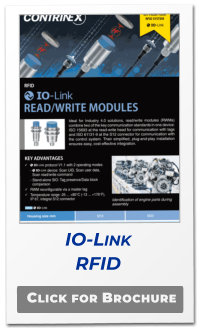
During the production of individually packaged cheese
portions, conveyors deliver product to packaging stations. In-
line buffering stations regulate flow to match packaging
throughput; miniature Ecolab-certified sensors detect the
presence of each portion after buffering, triggering the
packaging cycle. Sensitivity parameters for each portion size,
stored on the sensor’s inbuilt memory, may be updated
remotely without manual intervention, eliminating the need
for unplanned sanitisation between batches.
CUSTOMER APPLICATION
A Swiss manufacturer of premium dairy products produces a
range of individually packaged cheese portions in a high-
volume hygienic production facility. Once cut to size, cheese
portions travel on a food-grade conveyor to a packaging
station; the duration of the packaging cycle is dependent on
the type of cheese and the portion size.
Prior to packaging, a buffering station produces a regular flow
of portions with a predetermined spacing to suit the
packaging throughput. The two operations must be
synchronized; the manufacturer requires a sensor system that
detects the presence of each cheese portion as it leaves the
buffering station, triggering the packaging cycle.
Sensors must be food-grade certified and withstand the
aggressive cleaning agents used during washdown routines.
They must also accommodate the full range of portion sizes
without the need for manual adjustment, as this would
necessitate sanitization each time the portion size changes.
Maximising throughput is an additional priority; rapid
changeover between product batches is essential.
From time to time, one or more incorrectly formed layers
occur. Individual bags may be missing from a row on arrival at
the packing station, or may be damaged or misaligned. A non-
contact sensor is needed to sense the height of the top layer of
bags, rejecting any defective cartons. It must be reliable and
require minimal maintenance.
CUSTOMER SOLUTION
ECOLAB-certified, diffuse-mode photoelectric sensors with
background suppression from the Contrinex C23 product
family are ideally suited to this application. These miniature
cubic devices, mounted above product conveyors immediately
after each buffering station, detect the presence of cheese
portions as they pass underneath. Positioning sensors is
simple thanks to a range of adjustable stainless steel
mounting brackets.
An industry-standard PNP normally open output with an M8
connector ensures optimum flexibility. Additionally, IO-Link, a
standardized point-to-point serial connection protocol for
sensors and actuators, is enabled on PNP versions at no
additional cost, offering the advantages of digital
communication without the need for special cabling. A second
output provides a stability alarm in the event of reduced
sensitivity, flagging the need for preventative maintenance
before any performance degradation occurs.
Robust sensor construction and ECOLAB-certified miniature
(20mm x 30mm x 10mm) plastic housings which are corrosion-
resistant and impervious to water ingress ensure reliable
operation in the demanding washdown environment;
Contrinex C23 devices are rated to IP67. An operating range
between 15mm and 250mm, adjustable via a teach button or
via IO-Link, accommodates the range of portion sizes without
compromise.
A brief one- or two-step teach procedure simplifies initial set-
up. One-button operation allows process engineers to teach
the target object and, optionally, the background, each time a
new portion size is introduced. Once taught, sensitivity
parameters are stored on the sensor’s inbuilt memory and
may be retrieved or updated remotely via IO-Link, eliminating
the need for manual adjustment.
These rugged miniature sensors meet the customer’s need for
reliable operation with little or no manual intervention, while
unplanned sanitization is avoided. The solution is highly cost-
effective with minimal non-productive time; throughput is
maintained at or above target levels. An additional benefit of
offering a range of low-cost stainless-steel mounting and
protection bracketry.

CUSTOMER VALUES
RELIABLE, REPEATABLE IN-LINE QUALITY CHECKS ON A NON-
CONTACT BASIS
IMPROVED QUALITY ARISING FROM REAL-TIME DETECTION OF
INCORRECTLY PACKED CARTONS
INCREASED PRODUCTIVITY AS STABILITY ALARM FLAGS
PREVENTATIVE-MAINTENANCE NEEDS
SINGLE SENSOR ACCOMMODATES A RANGE OF CARTON SIZES
WITHOUT REPOSITIONING
REMOTE ADJUSTMENT VIA IO-LINK REDUCES CHANGEOVER
TIME BETWEEN PRODUCTS
PRODUCT ADVANTAGES
MAXIMUM SENSING RANGE OF 300MM WITH PINPOINT RED
LED
BEST-IN-CLASS BACKGROUND-SUPPRESSION BLACK/WHITE
BEHAVIOUR
IO-LINK CONNECTIVITY AVAILABLE AT NO EXTRA COST ON
PNP VERSIONS
DUAL OUTPUT WITH STABILITY ALARM

CUSTOMER VALUES
INDUSTRY-STANDARD IO-LINK INTERFACE ENSURES RELIABLE
OUT-OF-THE-BOX CONNECTIVITY
DUAL-MODE READ-WRITE MODULES DELIVER ULTIMATE
FLEXIBILITY
STANDARD I/O MODE OPERATION PROVIDES DECENTRALISED,
LOCAL INTELLIGENCE
IO-LINK MODE OPERATION PROVIDES CENTRALISED
INTELLIGENCE
PLANT-WIDE COMMONALITY OF RWM HARDWARE MINIMIZES
SPARES INVENTORY HOLDING
INTEGRAL M12 CONNECTORS ENSURE EASY INSTALLATION
AND REPLACEMENT
PRODUCT ADVANTAGES
IO-LINK V1.1 COMPATIBILITY
ROBUST METAL HOUSINGS WITH PBTB SENSING FACES
SENSING DISTANCES UP TO 60MM
RECONFIGURABLE REMOTELY OR VIA MASTER TAG
A manufacturer of automated conveyor systems uses RFID
technology to monitor the location of items and to route them
to their chosen destinations. As an basket, fitted with an RFID
transponder tag, travels through the warehouse, IO-Link-
enabled high-frequency read-write modules (RWMs) monitor
its position and read pre-set data stored in the tag.
Local logic capability enables a read-write module to trigger a
conveyor diverter, routing the item without reference to a
centralised PLC-based control system.
CUSTOMER APPLICATION
An OEM manufacturer of automated conveyor systems for the
distribution sector uses RFID technology to monitor the
location of items as they pass through a warehouse. Designers
also required local control of two-way conveyor diverters to
route items to the correct destination;. Therefore generic
information stored on each RFID transponder tag determines
the required diverter position and thus an item’s destination.
Location monitoring relies on a plant-wide PLC-based control
system. An industry-standard interface with the RFID modules
is highly desirable as this allows the use of existing libraries of
PLC function blocks, avoiding the need for custom PLC code.
Ultra-high-speed communication is not essential as conveyor
speeds are moderate.
Local diverter switching relies solely on the information
contained in an item’s RFID tag; communication with the
centralized system is unnecessary. Response time must be no
more than 200 milliseconds to allow the diverter to operate
before the item reaches the switch point.
Customer Solution
IO-Link-enabled high-frequency (HF) read-write modules
(RWMs) and RFID tags from Contrinex are ideal for this
application. An IO-Link-enabled RWM, mounted on each
outlet pipe, is connected to a plant-wide control system via
two industry-standard 8-way IO-Link master hubs. An RFID
tag, mounted integrally within each hose coupling, identifies
the hose uniquely, allowing the outlet/hose combination to be
verified at the time of connection. Blanking caps also carry
unique RFID tags to confirm that unused outlets are capped.
The mechanical design of the RWM and tag mountings
ensures that the coupling or cap can only be locked in place
once the components are aligned accurately. With data-
transfer rates up to 38.4k baud, the sensors provide data in real
time, triggering an immediate alarm in the event of a
connection error.
Contrinex IO-Link RWMs are configurable to operate in one of
two discrete modes: IO-Link mode allows remote
communication via the standard protocol; alternatively, if local
control is preferred, standard I/O mode allows the device to
function as an intelligent presence-sensing sensor. Process
engineers can switch RWMs between modes either remotely,
using the IO-Link protocol itself, or locally, using a pre-
configured RFID tag (a Master Tag) which is simply placed on
top of the RWM during the RWM startup process.
With sensing distances up to 60 mm, robust M18- and M30-
threaded metal housings and integral M12 connectors,
Contrinex RWMs are ideally suited to the environment of a
busy industrial processing plant. They are compatible with all
ISO/IEC 15693 approved RFID tags, allowing designers ultimate
flexibility and excellent value for money.

CUSTOMER VALUES
RELIABLE, REPEATABLE IN-LINE QUALITY CHECKS ON A NON-
CONTACT BASIS
IMPROVED QUALITY ARISING FROM REAL-TIME DETECTION OF
INCORRECTLY PACKED CARTONS
INCREASED PRODUCTIVITY AS STABILITY ALARM FLAGS
PREVENTATIVE-MAINTENANCE NEEDS• SINGLE SENSOR
ACCOMMODATES A RANGE OF CARTON SIZES WITHOUT
REPOSITIONING
REMOTE ADJUSTMENT VIA IO-LINK REDUCES CHANGEOVER
TIME BETWEEN PRODUCTS
PRODUCT ADVANTAGES
MAXIMUM SENSING RANGE OF 300MM WITH PINPOINT RED
LED
BEST-IN-CLASS BACKGROUND-SUPPRESSION BLACK/WHITE
BEHAVIOUR
IO-LINK CONNECTIVITY AVAILABLE AT NO EXTRA COST ON
PNP VERSIONS• DUAL OUTPUT WITH STABILITY ALARM
Contrinex’s C23 photoelectric sensor family is small but
powerful and so ideal for conveyor and packaging applications.
An example application for the C23 is the food processing
industry, where ‘shingling’, or overlapped layering, is a
common technique for optimizing space during secondary
packaging operations. As shown in the video, biscuits are
sealed in gusseted bags with a triangular profile, and packed
in alternating, overlapping layers into a preformed cardboard
box. Once each box is full, it passes to a case-sealing station
prior to palletisation and dispatch.
From time to time, an incorrectly formed layer occurs, where a
bag might be damaged or misaligned. The C23 photoelectric
sensor with Background Suppression is used to provide non-
contact sensing of the height of the top layer of bags, rejecting
any over-filled cartons.
CUSTOMER APPLICATION
In the food processing industry, shingling, or overlapped
layering, is a common technique for optimising space
utilisation during secondary packaging operations.
Confectionery, sealed in gusseted bags with predominantly
triangular profiles, is packed in alternating, overlapping layers
in preformed cardboard cartons. Once each carton is full, it
passes to a case-sealing station prior to palletisation and
dispatch.
Pre-aligned bags of confectionery arrive at the packing station
in regularly spaced rows. At each station, a multi-axis pick-and-
place packing robot lifts a row of bags, aligns it and lowers it
into a preformed carton. Successive layers overlap each other,
ensuring that space within the carton is fully utilised. Once the
predetermined number of layers has been packed, the carton
is conveyed to the sealing station.
From time to time, one or more incorrectly formed layers
occur. Individual bags may be missing from a row on arrival at
the packing station, or may be damaged or misaligned. A non-
contact sensor is needed to sense the height of the top layer of
bags, rejecting any defective cartons. It must be reliable and
require minimal maintenance.
CUSTOMER SOLUTION
Rugged photoelectric sensors with background suppression
from the Contrinex C23 range are ideal for this application. A
pinpoint red LED with a 10mm-diameter light spot at the
maximum sensing range of 300mm ensures highly reliable
detection of objects of almost any colour against light or dark
backgrounds. These sensors are well suited to both the task
and the environment.
Immediately after packing, a single sensor is mounted
centrally above the conveyor. As each carton passes below on
its way to the sealing station, the sensor detects the top
surface of the packed bags. If the height of the top layer falls
outside preset limits, the sensor triggers a reject mechanism
that diverts the carton to a holding area for investigation.
Mounted in 20mm x 30mm x 10mm miniature plastic
housings, C23 photoelectric sensors are available with
industry-standard PNP or NPN 3-wire or 4-wire output.
Connection to the customer’s control system is via a PVC-
sheathed cable with the choice of an integral M12 connector or
a hermetically sealed entry. A second output provides a
stability alarm in the event of reduced sensitivity, flagging the
need for preventative maintenance before any performance
degradation occurs.
Locating sensors optimally is simple thanks to a custom-
designed range of multi-position mounting brackets. An
operating range between 15mm and 250mm accommodates a
variety of carton sizes without any need to reposition the
sensor. A simple electrical adjustment via an onboard
potentiometer suffices, while remote adjustment via IO-Link, a
standardized point-to-point serial connection protocol, is
available as standard at no extra cost for PNP version.
During high-speed production of retail bags, a confectionery
manufacturer conveys individual bags of sweets to a pick-and-
place packing robot for secondary packaging. A highly reliable
diffuse-mode photoelectric sensor, mounted beside the
conveyor, detects the presence of bags as they approach the
packing station and inhibits the pick-and-place sequence if no
bags are queued for the packing robots.
CUSTOMER APPLICATION
In the food-processing industry, consumer products generally
require secondary packaging – both for consolidation and for
protection, before final dispatch. During confectionery
production, individual bags of sweets travel by conveyor from
bagging stations to a pick-and-place packing robot for
secondary packaging, before passing on to the labelling and
packing area.
Ideally, product flow along the conveyor is continuous; in
practice, interruptions occur from time to time as bagging
machines require attention. In the absence of bagged
products arriving at the secondary-packaging station, a plant-
wide control system prevents operation of the pick-and-place
robot to prevent miss-filling.
Immediately prior to arrival at the secondary-packaging
station, custom-formed guide rails align bags for packing.
Space is limited and there is no easy access to both sides of the
conveyor. A highly reliable non-contact sensor system was
needed to detect the presence of bags as they approach the
alignment rails; the system must inhibit the pick-and-place
sequence if no bags are queued for packing.
CUSTOMER SOLUTION
Diffuse-mode photoelectric sensors from the Contrinex C23PA
family of sensors are ideal for this application. These highly
reliable devices contain both a transmitter and a receiver and
do not require a separate reflector, instead relying on the
reflective nature of the target. Space constraints are
accommodated without compromise, thanks to a maximum
sensing range of 3 to 1500mm. This is adjustable via a pre-set
potentiometer or via IO-Link, the standardised point-to-point
serial connection protocol.
Immediately before the alignment rails, a single sensor is
mounted beside the conveyor; positioning sensors is simple
thanks to a range of adjustable mounting brackets. As each
bag passes in front of the sensor, its presence triggers the
device, sending a signal to the customer’s control system. A
high-intensity red LED with a 15mm-diameter light spot at the
selected 500mm sensing range ensures highly reliable
detection of bags in real-time.
Mounted in 20mm x 30mm x 10mm miniature plastic
housings, C23 photoelectric sensors are available with
industry-standard PNP or NPN 3-wire or 4-wire output.
Connection to the customer’s control system is via a PVC-
sheathed cable with the choice of an integral M12 connector or
a hermetically sealed entry. A second output provides a
stability alarm in the event of reduced sensitivity, flagging the
need for preventative maintenance before any performance
degradation occurs
The sensors are corrosion-resistant and impervious to water
ingress and has the additional benefit of offering a range of
low-cost stainless-steel mounting and protection bracketry.
The reliability of the sensors in the application has been
excellent.
The sensors are corrosion-resistant and impervious to water
ingress and has the additional benefit of offering a range of
low-cost stainless-steel mounting and protection bracketry.
The reliability of the sensors in the application has been
excellent.

CUSTOMER VALUES
SAFE, RELIABLE OPERATION IN A HOSTILE WASHDOWN
ENVIRONMENT
NO RISK OF CROSS-CONTAMINATION BETWEEN PROCESSING
AND CLEANING SEQUENCES
EASY INTEGRATION WITH EXISTING PLANT-WIDE CONTROL
SYSTEM
COST-EFFECTIVE SOLUTION REQUIRING MINIMAL
MAINTENANCE
PRODUCT ADVANTAGES
IP68/ IP69K RATED HOUSING, FOOD-COMPATIBLE BODY
EXCEPTIONAL RESISTANCE TO SHOCK AND VIBRATION
AFFORDABLE HIGH-PERFORMANCE SENSOR WITH EXCELLENT
RELIABILITY
During manufacture of dairy products, raw milk travels
between successive processes through stainless-steel
pipework. Rotary-shaft control valves maintain process
sequences correctly, ensuring that no cross-contamination
occurs during CIP cleaning after each batch is completed.
Robust washdown inductive sensors, mounted on existing
rotary actuators, monitor control-valve status around the clock,
providing real-time positional feedback to a plant-wide control
system in a simple, cost-effective manner.
CUSTOMER APPLICATION
At a European dairy-processing plant, milk products, made
from pasteurized or raw milk, require hygienic transportation
between successive operations. Process engineers use
stainless-steel pipework to transport liquid ingredients from
one operation to the next. Fluid flow is managed using control
valves fitted with electrical, hydraulic or pneumatic actuators.
Multiple rotary-shaft valves deliver raw milk from holding
tanks to each process station in sequence, maintaining
specified flow rates and volumetric limits. Once processing of
each batch is completed and all process vessels are drained,
closed-loop CIP cleaning commences. Accurate, repeatable
valve sequencing is essential to prevent any chance of cross-
contamination between processing and cleaning sequences.
A robust, highly reliable sensor system, capable of
withstanding the harsh washdown regimes in force, is needed
to monitor control-valve positions during processing. Where
possible, sensors must be mounted on existing rotary
actuators, and real-time communication with existing plant-
wide control systems is mandatory.
Customer Solution
Sensing the position of a rotary-valve actuator is a routine task
for Contrinex Classics washdown inductive sensors. These
sensors interface directly with a range of industrial process
controllers and provide cost-effective confirmation of control-
valve status around the clock.
A purpose-designed bracket, mounted on the top surface of
each actuator, holds two sensors; these are positioned with the
sensing faces vertically aligned, one above the other, and
facing the actuator shaft. NAMUR-compatible (VDE/VDI 3845)
mountings on the actuators provide a known datum for the
sensors.
A solid plastic disc, mounted on the shaft, carries two or more
stainless-steel targets, positioned at 90 degrees to each other
around the outer peripheral surface of the disc. Each target
occupies either an upper or a lower position corresponding to
height of one of the sensors. As the shaft rotates, opening and
closing the valve, the targets pass in front of the sensing faces,
triggering the sensors.
These M12-diameter devices, rated to IP68/IP69K, have all-
metal bodies with PBTB sensing faces and vacuum-
encapsulated electronics; each features an industry-standard
PNP normally open output. Fully embeddable, and with a
sensing range up to 2mm, they are well suited to the hostile
operating conditions of a washdown environment.
Each sensor has an integral M12 connector, interfacing with
the customer’s control system via a TPE-S-sheathed cable.
Reliability is excellent; the system is simple and cost-effective.

CUSTOMER VALUES
RELIABLE, REPEATABLE IN-LINE TESTING OF A RANGE OF
DIFFERENT-SIZED CONTAINERS
TESTING IS COMPLETED AT PRODUCTION-LINE SPEED
IMMEDIATE IDENTIFICATION OF MISSING CLOSURES
ELIMINATION OF MANUAL INSPECTION AND POTENTIAL BATCH
REJECTION
PRODUCT ADVANTAGES
EXTENDED SENSING DISTANCES UP TO 40MM
UNMATCHED COMBINATION OF 40MM SENSING DISTANCE IN
M30-DIAMETER DEVICE
CUSTOMER SOLUTION
Contrinex Extra Distance inductive sensors are ideal for this
application, with the M30-diameter units operating reliably at
sensing distances up to 40mm; a single sensor thus
accommodates the entire range of container heights. Robust
construction with chrome-plated brass bodies and PBTP
sensing faces ensures that these devices are suitable for a busy
production environment.
A single sensor, located immediately after the sealing station
and positioned directly above the production line, provides
reliable, repeatable and fast detection of the aluminium-foil
closures. With a switching frequency of up to 100Hz, this Extra
Distance unit is well suited for fast-moving production where
high-speed sensing is required.
This Contrinex inductive sensor has an industry-standard PNP
normally-open interface and an integral M12 cable connector,
allowing easy removal and replacement of individual sensors
for maintenance. Connection to the customer’s test
equipment is via a flexible PVC-sheathed cable.
With an unmatched combination of 40mm sensing distance
in an M30-diameter device, the customer can now test the
entire range of containers without adjusting the sensor height
between batches. Contrinex Extra Distance inductive sensors
deliver exceptionally reliable test results at production-line
speed, without interruption.
A food-processing plant trusts Contrinex’s sensors to help it
ensure plastic bottles, filled with liquid food products, are
hermetically sealed and its customers kept safe. Prior to the
containers being capped, a long-distance inductive sensor,
positioned directly over the packaging line confirms the
presence of an aluminium-foil seal over the top of every
container.
CUSTOMER APPLICATION
Aluminium-foil closures are commonly utilised as seals for
plastic containers filled with ketchup, mustard and other table
sauces. At a food-processing plant, closures are applied to
filled containers passing along an automated production line,
sealing the contents ready for capping and bulk packaging.
From time to time, equipment malfunctions can occur and
containers leave the sealing station without closures in place. If
unsealed containers are not detected prior to capping, entire
batches of product may require manual inspection, resulting
in lost production, down-time or potential rejection by
customers.
An in-line sensor system inspecting each container could
confirm the presence of a foil closure, rejecting any faulty
items. Each production line processes containers in batches.
The system must accommodate containers whose heights
vary by up to 20mm, without adjustment of sensors between
batches as successive batches may comprise containers of
differing sizes.
Customer Solution
Contrinex ultrasonic sensors are ideal for presence- and level-
sensing applications, and a diffuse sensor from the Compact
range (housing size M30) is an excellent choice for this
application. Operating range for this metal-bodied, IP65-rated
device is between 20cm and 130cm; detection is independent
of the target’s color, shape, material or surface structure.
Contrinex Compact ultrasonic sensors feature an integral S12
cable connector, allowing rapid disconnection and removal
when required.
The variable size and shape of meat residue makes it difficult
for an uncompensated sensor to detect contamination
consistently and reliably; potentiometer adjustment, provided
by many manufacturers, is inadequate for this application.
Contrinex CONPROG software for Windows®, connected via
the APE-0000-001 PC interface, compensates perfectly.
Using CONPROG, the operator characterizes the target area of
the box during set-up, setting the exact operating parameters
of the sensor and ensuring reliable detection. Sensor data is
stored, allowing like-for-like sensor replacement without
additional set-up.
The sensor’s three-wire PNP normally-open output
communicates directly with the customer PLC. On detection
of a contaminated box, a mechanical diverter shunts the box
to a separate conveyor for manual emptying.
A meat-processing plant uses non-contact ultrasonic presence
sensing to increase productivity and eliminate breakdowns
when washing empty meat bins. A single ultrasonic sensor,
mounted above the conveyor on which the bins travel, checks
for meat residues, rejecting any contaminated bins before the
wash station. Old, contact-based systems were unreliable,
resulting in breakdowns and frequent interruptions to the
washing process.
CUSTOMER APPLICATION
During production, an industrial meat-processing company
conveys meat portions around its factory in food-grade plastic
bins. After completion of each batch, empty bins are washed
prior to reuse. Some bins contain sizeable pieces of meat
which, if undetected, accumulate in the washing machine,
causing blockages and breakdowns. The resulting
interruptions to production are unacceptably frequent.
A reliable sensor system must detect the presence of meat
residues in bins as they travel along the conveyor. The sensor
should identify all non-trivial residues and divert contaminated
bins before they enter the washing station. The system should
require little or no regular maintenance, and a non-contact
sensor, suitable for a hygienic environment, is preferred.
Old systems with spring-loaded wand-actuators in contact
with the box are unreliable and require regular adjustment;
the contact probes need frequent, time-consuming cleaning.
The new system has to operate on a fit-and-forget basis.

CUSTOMER VALUES
IMPROVED SENSOR RELIABILITY DERIVED FROM EXACT
CHARACTERISATION OF TARGET
INCREASED PRODUCTIVITY ARISING FROM ELIMINATION OF
BREAKDOWNS
REDUCED SENSOR MAINTENANCE RESULTING FROM NON-
CONTACT OPERATION
INDUSTRY-STANDARD INTERFACE REQUIRES LITTLE
MODIFICATION TO CONTROL SYSTEMS
PRODUCT ADVANTAGES
ECOLAB-CERTIFIED PHOTOELECTRIC SENSORS WITH
BACKGROUND-SUPPRESSION MODE
CHARACTERISED SENSORS DETECT TARGETS OF VARIABLE SIZE
AND SHAPE
LONG-DISTANCE, NON-CONTACT OPERATING PRINCIPLES
IP65 PROTECTION ALLOWS OPERATION IN HYGIENIC
ENVIRONMENTS
RUGGED ULTRASONIC SENSOR WITH METAL HOUSING AND
METAL CABLE CONNECTOR


CUSTOMER VALUES
RELIABLE, REPEATABLE IN-LINE QUALITY CHECKS ON A NON-
CONTACT BASIS
IMPROVED QUALITY ARISING FROM REAL-TIME DETECTION OF
INCORRECTLY PACKED CARTONS
INCREASED PRODUCTIVITY AS STABILITY ALARM FLAGS
PREVENTATIVE-MAINTENANCE NEEDS• SINGLE SENSOR
ACCOMMODATES A RANGE OF CARTON SIZES WITHOUT
REPOSITIONING
REMOTE ADJUSTMENT VIA IO-LINK REDUCES CHANGEOVER
TIME BETWEEN PRODUCTS
PRODUCT ADVANTAGES
MAXIMUM SENSING RANGE OF 300MM WITH PINPOINT RED
LED
BEST-IN-CLASS BACKGROUND-SUPPRESSION BLACK/WHITE
BEHAVIOUR
IO-LINK CONNECTIVITY AVAILABLE AT NO EXTRA COST ON
PNP VERSIONS• DUAL OUTPUT WITH STABILITY ALARM
WELCOME TO PLUS AUTOMATION LTD - EXPERTS IN SENSORS,
WE WILL HELP YOU SOLVE YOUR APPLICATIONS, IMPROVE MACHINE
PERFORMANCE & RELIABILITY AND REDUCE COSTS USING CONTRINEX’S
EXCEPTIONAL SENSORS - LET US HELP YOU #MAKE SENSE OF SENSORS



CUSTOMER SOLUTION
Contrinex fork light-barrier sensors combine simplicity of
installation, compact and robust construction and multi-mode
operation. They offer high-resolution, high-speed sensing plus
IO-Link connectivity, being ideal for position sensing and
presence detection.
The versatile, metal-cased devices offer designers the choice of
four discrete operating modes and switching frequencies up
to 14,000Hz. With a standard resolution of 0.3 mm (down to 0.1
mm in high-resolution mode), with the convenience of a push-
pull output.
The industry-standard IO-Link communication protocol,
provides a choice of manual or remote set-up and adjustment,
enabling the sensor to be automatically reconfigured between
different product production runs.
simplifying installation while saving time and money.
The product range offers a choice of fork openings from 10
mm to 120 mm, to suit a wide variety of applications and
environments, whilst saving time and money.
A food-processing plant trusts Contrinex’s sensors to help it
ensure plastic bottles, filled with liquid food products, are
hermetically sealed and its customers kept safe. Prior to the
containers being capped, a long-distance inductive sensor,
positioned directly over the packaging line confirms the
presence of an aluminium-foil seal over the top of every
container.
CUSTOMER APPLICATION
Aluminium-foil closures are commonly utilised as seals for
plastic containers filled with ketchup, mustard and other table
sauces. At a food-processing plant, closures are applied to
filled containers passing along an automated production line,
sealing the contents ready for capping and bulk packaging.
CUSTOMER APPLICATION
In the continuous production of fast-moving items, line
stoppages are both costly and time consuming. After filling,
sealing and capping, bottles of ketchups and sauces are
labelled and packaged. Previously, if a plastic cap was missing
it could go undetected, risking an entire batch of production
potentially being rejected.
Contrinex’s highly versatile photoelectric fork sensor, is
positioned directly over the conveyor to sense the presence of
a cap on each bottle prior to labelling, triggering an alarm if a
cap is missing.

PRODUCT ADVANTAGES
HIGH FREQUENCY UP TO 14 KHZ
4 SELECTABLE MODES BETWEEN PRODUCTION BATCHES:
STANDARD, HIGH RESOLUTION, POWER, SPEED
IO-LINK V1.1 COMMUNICATION PROTOCOL
SENSITIVITY ADJUSTMENT ALLOWING DETECTION OF
TRANSPARENT OBJECTS
PRECISE ALIGNMENT REQUIRES NO ON-SITE ADJUSTMENT
















